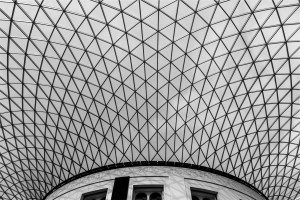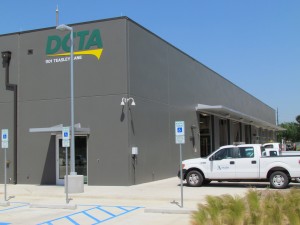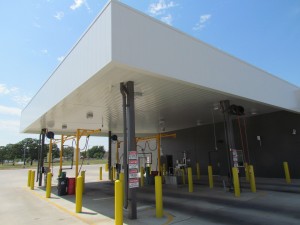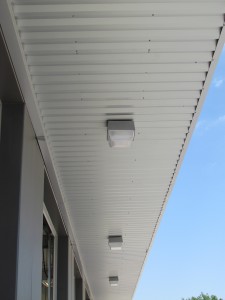 Most people understand the purpose of a building code: To ensure the safety of the occupants and to establish the minimum accepted performance level of the building and its systems. Fewer people understand that because building codes are adopted into law by a governing body, technically referred to as an Authority Having Jurisdiction or AHJ, they are an in fact an extension of the law or ordinance that brings them into effect. Knowing that, you should not be surprised to learn that like laws, building codes in America can’t just be arbitrarily made up by somebody having the authority and know-how to do so. Instead, they must have gone through some type of consensus process in which all affected entities or their representatives have the opportunity to participate. This concept, called Due Process of Law, is central to many governmental charters such as the Magna Carta and The Constitution of the United States of America and is designed to ensure that a person’s individual rights are not unfairly taken away.
Most people understand the purpose of a building code: To ensure the safety of the occupants and to establish the minimum accepted performance level of the building and its systems. Fewer people understand that because building codes are adopted into law by a governing body, technically referred to as an Authority Having Jurisdiction or AHJ, they are an in fact an extension of the law or ordinance that brings them into effect. Knowing that, you should not be surprised to learn that like laws, building codes in America can’t just be arbitrarily made up by somebody having the authority and know-how to do so. Instead, they must have gone through some type of consensus process in which all affected entities or their representatives have the opportunity to participate. This concept, called Due Process of Law, is central to many governmental charters such as the Magna Carta and The Constitution of the United States of America and is designed to ensure that a person’s individual rights are not unfairly taken away.
Under the US Constitution, laws are written by Congress and interpreted by judges. Members of Congress are elected by their constituents and judges are either appointed by elected officials or elected themselves. Similarly, building codes are written by consensus bodies, like the International Code Council or ICC, and interpreted by Building Officials, who are generally appointed by elected officials. The code development process used by ICC is one where any interested member of the public can participate and is guaranteed a forum to propose changes and comment on the proposed changes submitted by others using a system governed by Roberts Rules of Order. After discussion and debate, the code committee votes on the individual proposals and those that pass are incorporated into the code, guaranteeing due process. (Actually, it’s quite a bit more complicated than this but for purposes of this blog, let’s just leave it at that.)
However, building codes commonly do not actually spell out all of the requirements for buildings and building systems. More and more, the code will delegate low-level detailed requirements to a different type of document called a standard, and then brings the requirements contained within by referencing the standard in the code by name. Likewise, these standards then must also be developed through a consensus process administered by an adequate standard development body. But because all standard development bodies are structured a little differently, it is not realistic to mandate that consensus process directly. Instead, another independent body called The American National Standards Institute or ANSI, certifies standard development bodies as having a sufficient consensus processes to be deemed as meeting the incorporating code requirements for due process. Examples of these bodies are the American Society of Civil Engineers (ASCE) who develop ASCE 7, the document that determines the minimum load requirements for buildings; the American Society of Testing and Materials (ASTM) a group widely known for developing material and testing specifications for general use; and the American Society of Heating, Refrigeration and Air Conditioning Engineers (ASHRAE), who develops ASHRAE 90.1, the document that spells out the minimum building energy efficiency requirements. If you are an architect or engineer, all of these acronyms should sound very familiar to you.
Another acronym that you are probably familiar with is LEED, which stands for Leadership in Energy and Environmental Design. It is developed and maintained by the US Green Building Council (USGBC) and is the premier green building program in the world. Interestingly though, the development landscape changes drastically when it comes to green construction programs like LEED. You see, the USGBC is not an ANSI accredited standard developer and thus LEED is not an actual official standard, hence the use of the word “program”. How then is it possible that USGBC can have so much say in how buildings, particularly publicly owned buildings, get built? The answer is that they get around this limitation by structuring LEED as a voluntary program and then lobbying the potential owners of buildings, like the US and state governments, into using their program by executive order rather than legislating the requirement directly. If you’ve watched TV at all in the last year, particularly with respect to immigration reform, you know how controversial this approach can be. Nevertheless, it is perfectly legal in this context.
This really has not been a significant issue to date because LEED does have a consensus process (albeit not an ANSI accredited one) and LEED credit requirements have been fairly uncontroversial in past versions. However, LEED v4, the latest generation of the wildly popular green building program, changed all of that by adding credits that are less about design and functionality of the building and more about transparency with respect to building product ingredients to ensure occupant health and comfort. Let’s be clear: Most reasonable people, including building product manufacturers, don’t have a problem with increased transparency and want more occupant comfort and health. But it is how LEED defines “transparency” in version 4 has many people up in arms and they point to the hypocrisy of developing a definition to the word “transparency” during a closed-door meeting with no manufacturers at the table as what is wrong with green building as it exists today. My next blog will explore that concept further.
 Take for instance the Denton County Transit Authority (DCTA) in Denton, Texas. Their operations were expanding so rapidly that they were in need of new facilities to house their growing fleet of buses. As a provider of mass transportation, DCTA was already focused on reducing fuel costs and eliminating carbon dioxide emissions. Rightfully so, they were environmentally conscious and wanted their new facility to reflect the same. To help achieve this sustainability, Huitt-Zollars Architectural Firm selected
Take for instance the Denton County Transit Authority (DCTA) in Denton, Texas. Their operations were expanding so rapidly that they were in need of new facilities to house their growing fleet of buses. As a provider of mass transportation, DCTA was already focused on reducing fuel costs and eliminating carbon dioxide emissions. Rightfully so, they were environmentally conscious and wanted their new facility to reflect the same. To help achieve this sustainability, Huitt-Zollars Architectural Firm selected  insulation. The panel can achieve an R-value up to 8.5 per inch of panel thickness. Additionally, since the panel and insulation are manufactured together and delivered as one piece, it reduces installation time.
insulation. The panel can achieve an R-value up to 8.5 per inch of panel thickness. Additionally, since the panel and insulation are manufactured together and delivered as one piece, it reduces installation time. test results show no air leakage at 6.24 PSF and no water penetration at 13.24 PSF. Furthermore, the symmetrical rib of the 7.2 Panel offers excellent spanning and cantilever capabilities.
test results show no air leakage at 6.24 PSF and no water penetration at 13.24 PSF. Furthermore, the symmetrical rib of the 7.2 Panel offers excellent spanning and cantilever capabilities.